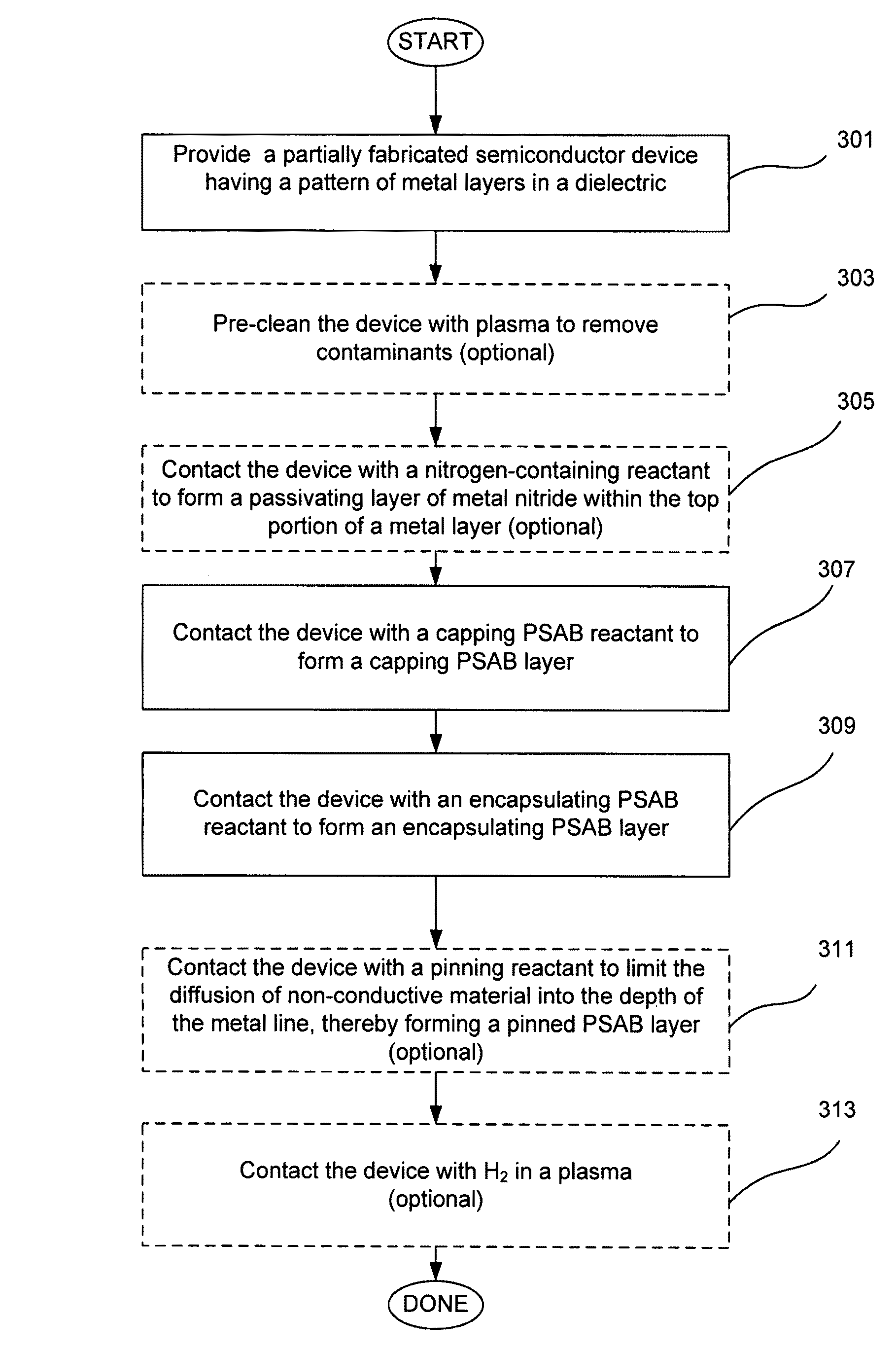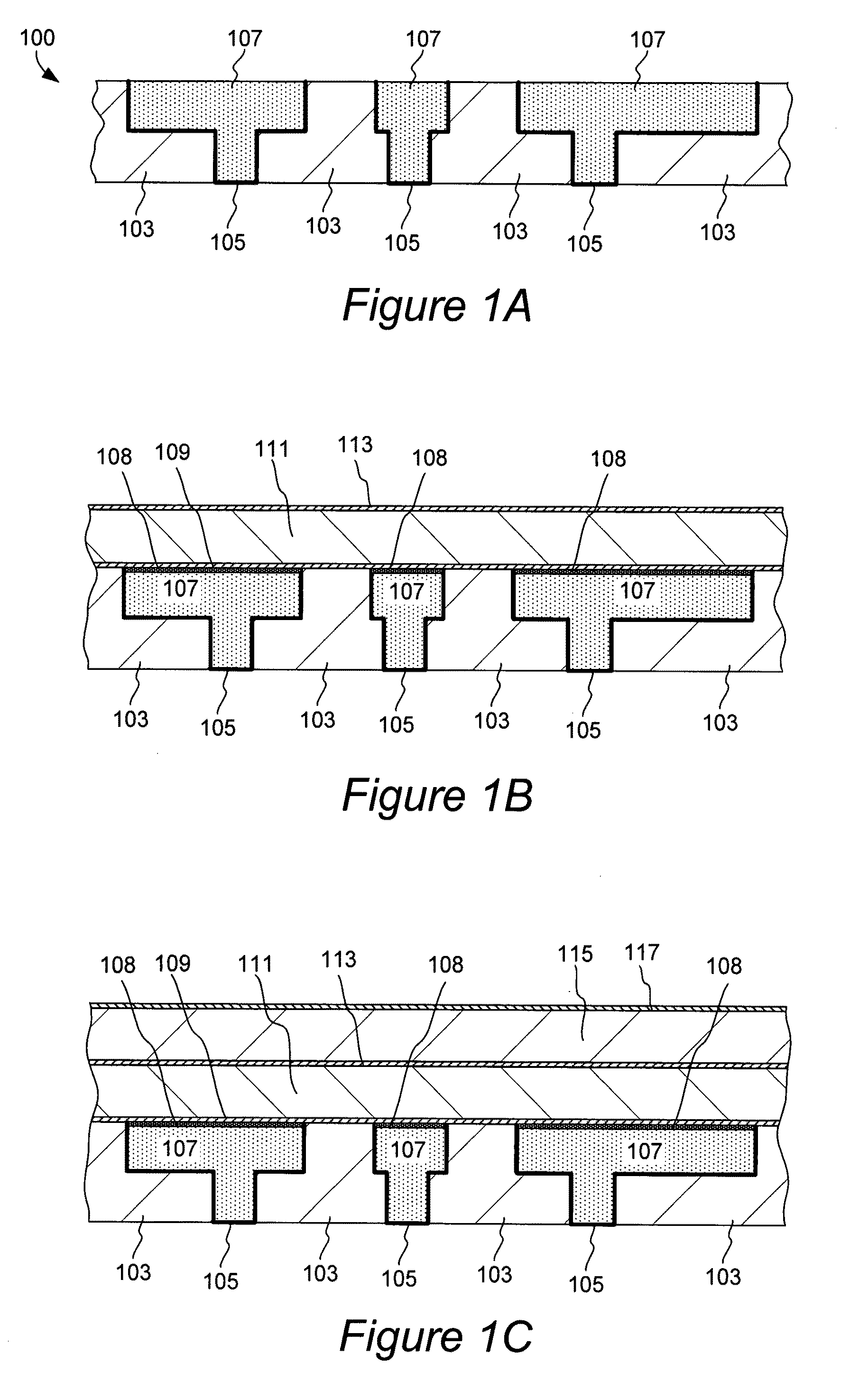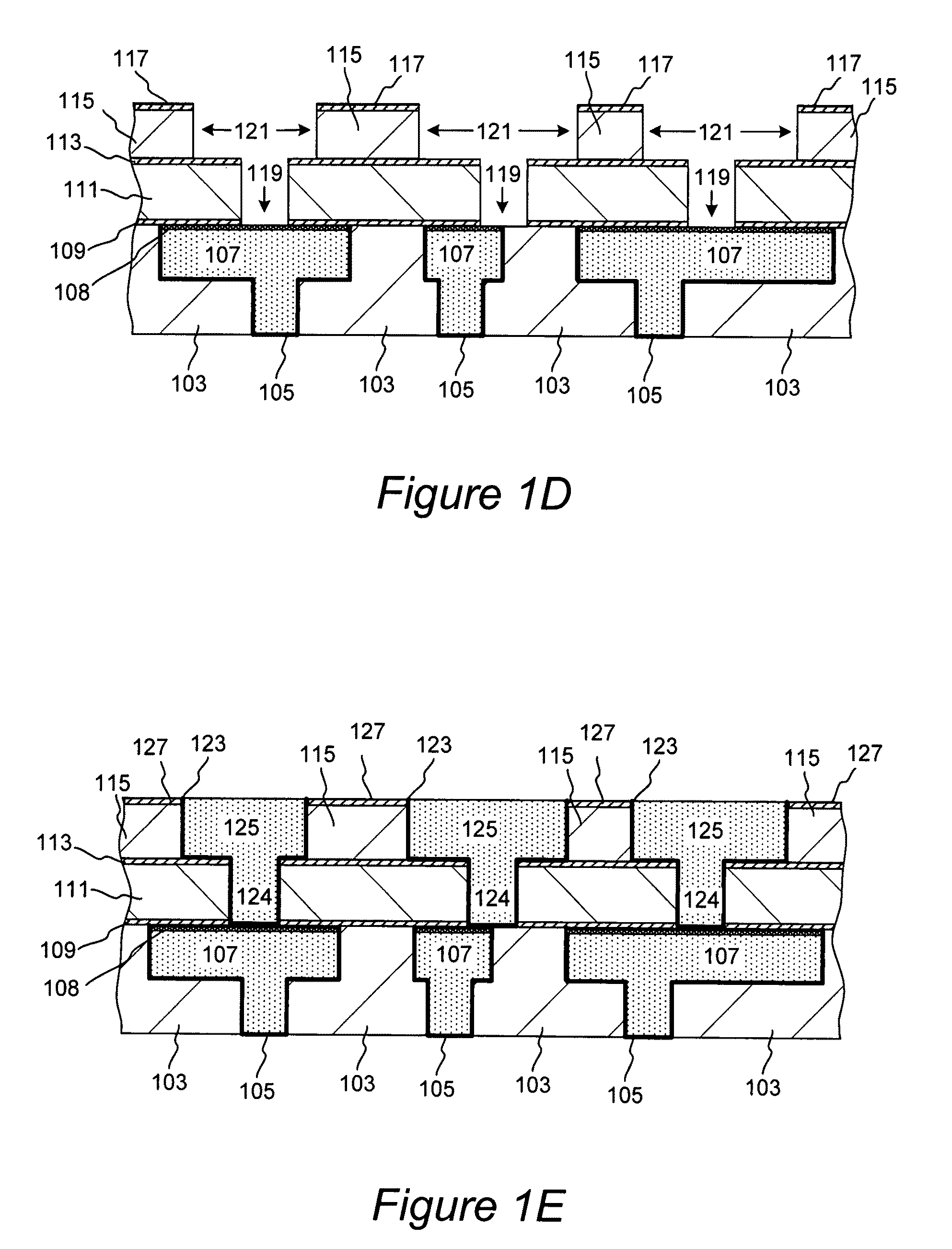Protective self-aligned buffer layers for damascene interconnects
a buffer layer and damascene technology, applied in the direction of thin material handling, electrical equipment, transportation and packaging, etc., can solve the problem of the dimensions of ic device features, and achieve the effect of high mobility
- Summary
- Abstract
- Description
- Claims
- Application Information
AI Technical Summary
Benefits of technology
Problems solved by technology
Method used
Image
Examples
examples
[0126]One example of a device, containing an encapsulating PSAB layer is illustrated in FIG. 8. FIG. 8 provides a Secondary Ion Mass Spectroscopy (SIMS) plot of an interconnect prepared according to a method described herein. The SIMS plot presents concentrations of various components in the device as a function of their position within an interconnect. Position at a zero angstrom depth corresponds to the surface of the dielectric diffusion barrier layer. Curves (a), (b), (c), (d), (e) and (f), present concentrations of Si, Ta, Ge, O, Cu, and N respectively. It can be seen that curve (c) corresponding to germanium concentration has two peaks corresponding to two portions of an encapsulating PSAB layer within the interconnect. One peak at the depth of about 190 Å corresponds to the “top” portion of an encapsulating PSAB layer at the interface between copper layer and the dielectric diffusion barrier, while the second peak at the depth of about 950 Å corresponds to the “bottom” portio...
example 2
[0136]The 300 mm wafer was pre-heated at the first station at 275° C. and 2.3 ton for 60 seconds. N2 was flowed into the chamber at a flow rate of 5000 sccm during pre-heating.
[0137]Then, the substrate was plasma pre-cleaned at the same station. H2 was flowed at a flow rate of 4000 sccm; HF RF plasma power of 740-870 W was used (no LF power was applied). Pre-cleaning was performed at 4.2 ton and 275° C. for 15 seconds.
[0138]After pre-cleaning the substrate was treated with SiH4 without use of plasma at the same station. SiH4 was introduced at 120 sccm flow rate concurrently with NH3 introduced at a flow rate of 4000 sccm. SiH4 treatment was performed at 2.3 ton and 275° C. for 2 seconds.
[0139]Then the substrate was treated with GeH4 at the same station. During GeH4 treatment, GeH4 was introduced at a flow rate of 50 sccm, H2 at 9000 sccm and N2 at 18000 sccm. GeH4 treatment was performed at 1.5 ton and 275° C. for 2 seconds.
[0140]The substrate was then subjected to a pinning operati...
example 3
[0142]The 300 mm wafer was pre-heated at the first station at 275° C. and 2.3 ton for 60 seconds. N2 was flowed into the chamber at a flow rate of 5000 sccm during pre-heating.
[0143]Then, the substrate was plasma pre-cleaned at the same station. H2 was flowed at a flow rate of 4000 sccm; HF RF plasma power of 740-870 W was used (no LF power was applied). Pre-cleaning was performed at 4.2 ton and 275° C. for 15 seconds.
[0144]After pre-cleaning the substrate was treated with SiH4 without use of plasma at the same station. SiH4 was introduced at 120 sccm flow rate concurrently with H2 introduced at a flow rate of 4000 sccm. SiH4 treatment was performed at 2.3 torr and 275° C. for 4 seconds.
[0145]Then the substrate was treated with GeH4 at the same station. During GeH4 treatment, GeH4 was introduced at a flow rate of 50 sccm, and H2 at 9000 sccm. GeH4 treatment was performed at 1.5 ton and 275° C. for 2 seconds.
[0146]The substrate was then subjected to a pinning operation. Pinning was p...
PUM
| Property | Measurement | Unit |
|---|---|---|
| pressure | aaaaa | aaaaa |
| temperature | aaaaa | aaaaa |
| pressure | aaaaa | aaaaa |
Abstract
Description
Claims
Application Information
 Login to View More
Login to View More - R&D
- Intellectual Property
- Life Sciences
- Materials
- Tech Scout
- Unparalleled Data Quality
- Higher Quality Content
- 60% Fewer Hallucinations
Browse by: Latest US Patents, China's latest patents, Technical Efficacy Thesaurus, Application Domain, Technology Topic, Popular Technical Reports.
© 2025 PatSnap. All rights reserved.Legal|Privacy policy|Modern Slavery Act Transparency Statement|Sitemap|About US| Contact US: help@patsnap.com



